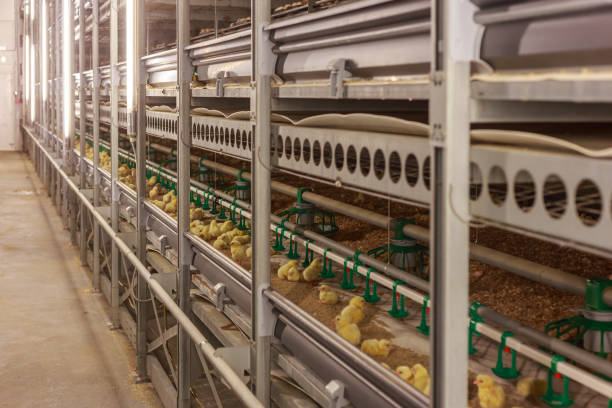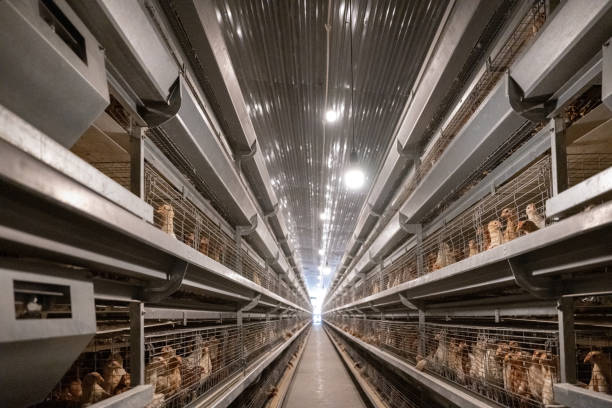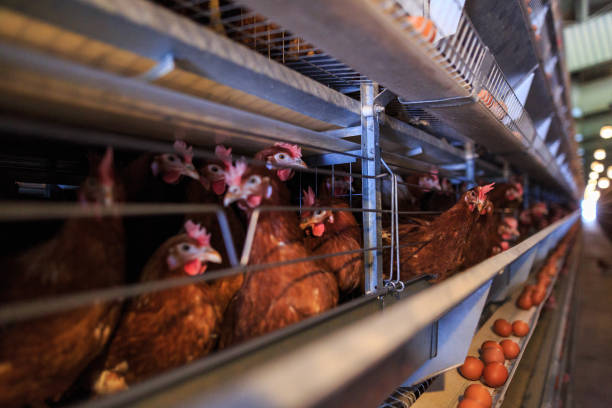Ghana Layer Farm Business Plan: Key Strategies for Success
Ghana’s poultry industry is brimming with potential, and layer farming, specifically, offers a compelling opportunity for entrepreneurs. However, success in this sector hinges on a well-structured business plan that tackles the unique challenges and opportunities present in the Ghanaian market. This article outlines key strategies and considerations for creating a winning layer farm business plan in Ghana. From market analysis and production planning to financial forecasting and risk management, we’ll cover crucial elements to help you establish a thriving layer farm.
**I. Understanding the Lay of the Land: Market Analysis**
Before even thinking about chicks and cages, a thorough market analysis is paramount. This involves understanding both the demand and supply sides of the egg market in Ghana.
* **Demand Analysis:**
* **Egg Consumption Patterns:** Research egg consumption habits across different demographics and regions in Ghana. Are there seasonal fluctuations in demand? What are the preferred egg sizes and shell colors? Understanding consumer preferences helps tailor your production to meet specific market needs.
* **Key Consumer Segments:** Identify your target customer base. Will you focus on supplying eggs to hotels and restaurants, supermarkets, local markets, or egg vendors? Each segment has different requirements regarding pricing, volume, and quality.
* **Pricing Dynamics:** Analyze current egg prices in various markets. Identify factors influencing price fluctuations, such as feed costs, seasonal demand, and competition. This will help you develop a realistic pricing strategy for your farm.
* **Supply Analysis:**
* **Existing Layer Farms:** Evaluate the competitive landscape by identifying existing layer farms in your region. Assess their size, production capacity, technology used, and market share.
* **Egg Imports:** Determine the volume of egg imports into Ghana and their impact on domestic egg prices. Understanding import trends helps gauge the potential for local producers to capture a larger market share.
* **Feed Suppliers:** Identify reliable feed suppliers in Ghana. Assess the quality and cost of different feed options, as feed represents a significant portion of your operating expenses. Consider exploring local feed production to reduce costs and improve sustainability.
* **Distribution Channels:** Investigate existing distribution channels for eggs in Ghana. Will you rely on wholesalers, retailers, or establish your own distribution network? Understanding the logistics of egg distribution is crucial for getting your product to market efficiently.
**II. Building the Foundation: Production Planning**

Once you have a solid understanding of the market, the next step is to develop a comprehensive production plan. This involves outlining the specifics of your layer farm operations, from selecting the right breed to managing waste disposal.
* **Selecting the Right Breed:**
* Choose a layer breed that is well-suited to the Ghanaian climate and market demands. Consider factors such as egg production rate, egg size, feed conversion ratio, and disease resistance. Hy-Line Brown, Lohmann Brown, and Bovans Brown are popular choices known for their high egg production and adaptability.
* Source chicks from reputable hatcheries that provide healthy, disease-free birds. Make sure the hatchery has a proven track record and offers post-sale support.
* **Housing and Equipment:**
* **Housing System:** Decide on the type of housing system you will use. Options include deep litter, free-range, and cage systems. Cage systems, particularly those offered by companies like Livi Machinery, are popular for their high stocking density, ease of management, and improved egg hygiene.
* **Cage System Considerations:** If you opt for a cage system, carefully consider the design and features. Opt for cages that provide adequate space per bird, have good ventilation, and are easy to clean. Automatic feeding and watering systems can significantly reduce labor costs and improve efficiency. The galvanized or coated A-type and H-type layer cages are popular for their durability and cost-effectiveness.
* **Climate Control:** Implement measures to regulate temperature and humidity in the poultry house. This is particularly important in Ghana’s hot and humid climate. Ventilation systems, cooling pads, and shading can help maintain optimal environmental conditions.
* **Lighting Program:** Implement a proper lighting program to stimulate egg production. Gradually increase the light hours as the hens mature, reaching a maximum of 16 hours of light per day during peak production.
* **Waste Management:** Develop a comprehensive waste management plan to minimize environmental impact. Consider composting chicken manure for use as fertilizer or biogas production. Ensure proper drainage and sanitation to prevent the spread of diseases.
* **Feeding Strategy:**
* Formulate a balanced feeding program that meets the nutritional requirements of laying hens at different stages of their life. Consult with a poultry nutritionist to develop custom feed formulations or source high-quality commercial feed.
* Ensure a consistent supply of feed to maintain egg production. Establish relationships with reliable feed suppliers and explore options for on-farm feed milling to reduce costs.
* Implement strict biosecurity measures to prevent feed contamination. Store feed in a dry, secure location and regularly inspect for signs of spoilage or pests.
* **Health Management:**
* Develop a proactive health management program to prevent and control diseases. Implement strict biosecurity measures to prevent the introduction of pathogens into the farm.
* Vaccinate birds against common poultry diseases such as Newcastle disease, infectious bronchitis, and fowl pox. Work with a veterinarian to develop a customized vaccination schedule.
* Regularly monitor birds for signs of illness and isolate sick birds promptly. Implement a rigorous sanitation program to minimize the spread of diseases.
* **Egg Handling and Storage:**
* Implement proper egg handling procedures to maintain egg quality and prevent contamination. Collect eggs frequently and store them in a cool, dry place.
* Grade and sort eggs according to size and quality. Use appropriate packaging materials to protect eggs during transportation.
* Maintain accurate records of egg production, sales, and expenses. This data will be essential for monitoring performance and making informed management decisions.
**III. Counting Your Chickens: Financial Projections**
A detailed financial plan is crucial for attracting investors and securing funding. This section involves projecting your revenue, expenses, and profitability over a specific period (typically 3-5 years).
* **Start-up Costs:**
* Estimate all initial investments, including land acquisition or lease, poultry house construction, equipment purchase (cages, feeders, waterers, etc.), chick procurement, initial feed costs, and veterinary expenses.
* Include costs for permits, licenses, and insurance.
* Consider working capital requirements to cover operating expenses during the initial months before egg production begins.
* **Operating Expenses:**
* Project ongoing expenses such as feed costs, labor costs, veterinary expenses, electricity and water bills, maintenance and repairs, and transportation costs.
* Accurately estimate feed consumption based on the number of birds and their age.
* Factor in depreciation of assets such as cages and equipment.
* **Revenue Projections:**
* Estimate egg production based on the breed’s potential and your management practices.
* Project egg sales based on your pricing strategy and market demand.
* Consider potential revenue from the sale of manure as fertilizer.
* **Profitability Analysis:**
* Calculate key financial metrics such as gross profit, net profit, and return on investment (ROI).
* Determine the break-even point (the level of production needed to cover all expenses).
* Conduct sensitivity analysis to assess the impact of changes in key variables such as feed costs and egg prices on your profitability.
* **Funding Sources:**
* Identify potential sources of funding for your layer farm. Options include personal savings, loans from banks or microfinance institutions, grants from government agencies or NGOs, and investments from private investors.
* Prepare a detailed business proposal to present to potential investors or lenders.
**IV. Mitigating Risks: Risk Assessment and Management**
Layer farming, like any business, involves inherent risks. Identifying and mitigating these risks is crucial for ensuring the long-term success of your operation.
* **Disease Outbreaks:**
* Implement strict biosecurity measures to prevent disease outbreaks.
* Develop a contingency plan for managing outbreaks, including quarantine procedures, medication protocols, and disposal methods.
* Obtain insurance coverage for potential losses due to disease outbreaks.
* **Feed Price Fluctuations:**
* Negotiate long-term contracts with feed suppliers to secure stable prices.
* Explore options for on-farm feed milling to reduce costs and improve control over feed quality.
* Consider using alternative feed ingredients to reduce reliance on expensive commercial feed.
* **Market Volatility:**
* Diversify your customer base to reduce reliance on any single market segment.
* Develop a strong brand identity to differentiate your eggs from competitors.
* Explore opportunities for value-added processing, such as producing hard-boiled eggs or egg powder.
* **Operational Risks:**
* Implement preventative maintenance programs to minimize equipment downtime.
* Train staff on proper poultry management practices to reduce errors and improve efficiency.
* Ensure adequate security measures to prevent theft and vandalism.
* **Environmental Risks:**
* Implement environmentally sustainable waste management practices.
* Obtain necessary permits and comply with environmental regulations.
* Address potential risks from extreme weather events such as floods or droughts.
**V. The Power of Partnerships: Collaboration and Networking**
Building strong relationships with other stakeholders in the poultry industry can significantly enhance your chances of success.
* **Veterinarians:** Establish a relationship with a qualified poultry veterinarian who can provide regular health checks and medical advice.
* **Feed Suppliers:** Partner with reputable feed suppliers who can provide high-quality feed at competitive prices.
* **Equipment Suppliers:** Collaborate with reliable equipment suppliers like Livi Machinery to ensure access to efficient and durable poultry equipment.
* **Industry Associations:** Join poultry industry associations to network with other farmers, share information, and advocate for favorable policies.
* **Government Agencies:** Engage with government agencies to access training programs, technical assistance, and financial support.

**VI. The Continuous Improvement Cycle: Monitoring and Evaluation**
A successful layer farm business plan is not a static document; it should be regularly reviewed and updated based on performance and market changes.
* **Key Performance Indicators (KPIs):** Track key performance indicators such as egg production rate, feed conversion ratio, mortality rate, and egg prices.
* **Regular Reporting:** Prepare regular reports on financial performance, operational efficiency, and market trends.
* **Data Analysis:** Analyze data to identify areas for improvement and make informed management decisions.

* **Plan Adjustments:** Revise your business plan as needed to address challenges and capitalize on opportunities.
* **Stay Informed:** Remain updated on industry trends, new technologies, and best practices.
By carefully considering these key strategies and incorporating them into your business plan, you can increase your chances of establishing a thriving layer farm in Ghana and contributing to the growth of the country’s poultry industry. Embracing innovation, prioritizing sustainability, and fostering strong relationships will be crucial for long-term success in this dynamic and promising market. The right equipment and a well-structured cage system from a reliable supplier like Livi Machinery can lay the groundwork for efficient and profitable egg production, ultimately contributing to the farm’s overall success in the Ghanaian market.






